At Gentle Touch Family Dentistry, we prioritize your oral health and well-being. Tooth extractions are a common dental operation that can be performed on patients and may become necessary for various reasons. In this comprehensive buyer’s guide, we will explore tooth extractions, the reasons for them, the procedure itself, recovery, potential complications, and what to consider when undergoing tooth extractions as a dental procedure.
Understanding Tooth Extractions
What Are Tooth Extractions?
Tooth extractions, offered at Gentle Touch Family Dentistry, are dental procedures performed to remove a tooth from its socket in the gum. This treatment is usually necessary when a tooth is severely decayed, damaged, or infected and cannot be saved through other means. During the extraction process, the dentist will carefully remove the tooth using specialized tools. After the extraction, patients may experience some discomfort and will be advised on proper aftercare to promote healing. At Gentle Touch Family Dentistry, the team ensures a comfortable and safe tooth extraction procedure, prioritizing patient well-being and oral health.
Reasons for Tooth Extractions
Tooth extractions may be necessary for various reasons, including:
- Severe Tooth Decay: When tooth decay reaches an advanced stage and cannot be effectively treated with restorative procedures, extraction may be necessary.
- Gum Disease: When periodontal disease progresses, it can cause tooth mobility and loss, necessitating extraction.
- Tooth Infection: An infection within a tooth (abscess) that cannot be remedied using the procedure known as root canal therapy may require extraction to prevent the spread of infection.
- Impacted Wisdom Teeth: These teeth are also referred to as the third molars may become impacted (unable to fully emerge) and cause pain, infection, or other issues.
- Crowding: Tooth extraction may be necessary as part of orthodontic treatment to create space for proper alignment.
- Orthodontic Treatment: The removal of teeth may be necessary in some circumstances to achieve orthodontic goals, such as correcting overcrowding.
The Tooth Extraction Procedure
The tooth extraction procedure typically involves the following steps:
- Consultation: You are scheduled to meet with your dentist for a consultation to assess the condition of the tooth, discuss the extraction process, and address any concerns or questions.
- Anesthesia: It is necessary to apply local anesthesia in order to numb the region around the tooth to ensure you are comfortable and pain-free during the procedure.
- Extraction: The dentist uses specialized instruments to gently loosen the tooth’s hold on the socket, then carefully pull it out. In some cases, a surgical extraction may be necessary for impacted or deeply rooted teeth.
- Stitching (if needed): For surgical extractions or other specific cases, stitches may be used to close the extraction site.
- Recovery Instructions: The dentist provides post-extraction care instructions, including recommendations for pain management, diet, and oral hygiene.
Recovery After Tooth Extractions
Recovery after tooth extractions is essential for healing and minimizing complications. Here are some key points to consider:
- Pain Management: Over-the-counter or prescribed pain medication may be necessary to manage discomfort during the initial recovery period.
- Swelling: Some degree of swelling and bruising is normal. Putting on an ice pack can be of some assistance to the area that is suffering from some assistance to reduce swelling.
- Diet: Stick to a soft or liquid diet for the first few days to avoid putting excessive pressure on the extraction site.
- Oral Hygiene: Carefully follow your dentist’s instructions for oral hygiene to prevent infection. For the first twenty-four hours, you should avoid vigorously spitting or cleaning your mouth.
- Stitches Removal: If stitches were used, your dentist will schedule a follow-up visit to remove them at some point in the future. when the site has healed.
Potential Complications and Risks
While tooth extractions are generally safe, there are potential complications and risks to be aware of, including:
- Infection: The extraction site can become infected if proper oral hygiene is not maintained.
- Dry Socket: In some cases, a blood clot does not form or is dislodged from the area around the tooth extraction, resulting in dry socket which can be painful.
- Nerve Damage: In rare cases, nearby nerves may be affected during extraction, causing temporary or permanent numbness or tingling.
- Bleeding: After an extraction, it’s usual to experience some bleeding but excessive bleeding may require further treatment.
- Inadequate Healing: In some cases, the extraction site may not heal properly, leading to persistent pain or infection.
Choosing Tooth Extractions
If you are considering tooth extractions, it’s crucial to have a thorough discussion with your dentist. Here are some factors to consider:
- Professional Assessment: Consult with your dentist to determine if tooth extraction is the best course of action for your specific dental issue.
- Alternative Treatments: Explore alternative treatments or restorative options, such as crowns or root canal therapy for teeth applicable.
- Anesthesia Options: Discuss anesthesia options and pain management with your dentist to ensure you are comfortable during the procedure.
- Aftercare Plan: Familiarize yourself with post-extraction care instructions and ensure you can follow them effectively.
- Potential Complications: Be aware of potential complications and risks associated with the extraction and discuss them with your dentist.
Gentle Touch Family Dentistry and Tooth Extractions
At Gentle Touch Family Dentistry, we are dedicated to offering tooth extraction procedures that are both safe and effective, and which are customized to meet the specific requirements and preferences of each individual patient. To guarantee that you remain in a state of comfort and well-being during the entirety of the treatment, our skilled group of dentists will apply cutting-edge procedures, cutting-edge technology, and an approach that is centered on the patient.
Please get in touch with us as soon as possible to set up a consultation if you think that you might require tooth extraction or if you have any queries regarding the procedure. We are here to help you navigate the process, solve any issues you may have, and give you the greatest level of dental care possible to meet your requirements. It is important to keep in mind that tooth extraction is a regular dental treatment that, when carried out by qualified professionals, can help your teeth and gums get in better shape overall and contribute to your general well-being.

